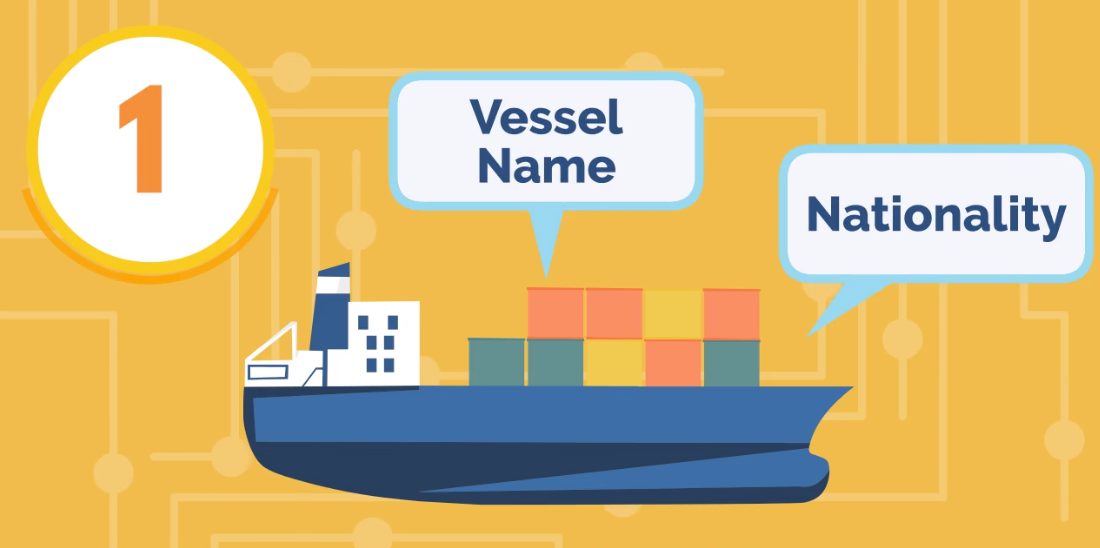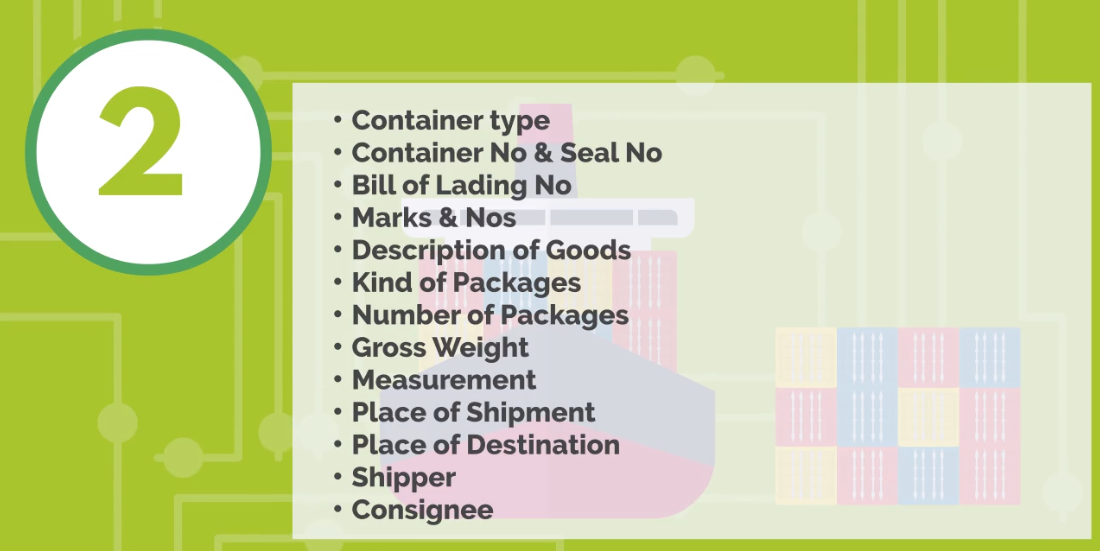
 Neko Senpai
Neko Senpai About Manifest in Marine Transportation!!
Video of This Article
 Kamome Senpai
Kamome Senpai This is 8:40 video!

Hello, it’s IINO.
In this video, I would like to explain the key word “Manifest” that appears in the practice of marine transportation.
About Manifest

If you have experience in trade administration and practice, you may have heard the term “Manifest” in marine transportation.
Manifest is a statement that shows what kind of cargo is loaded on a ship.
In the case of an airplane, it is like a passenger list that lists who is on the plane.
Rule of Manifest

Manifests in marine transportation have the role of informing the customs of the import side in advance of what cargo is being transported.
Particularly after the terrorist attacks, on the U.S. in 2001, U.S. mandate the “24-hour rule” which is to submit Manifest 24 hours prior to loading.
Therefore, Manifests have become more important in preventing terrorist attacks in many countries.
Use of Manifest

Customs is a government agency, that determines whether or not import and export cargoes are permitted or not, and it acts as a “checkpoint”.
Customs identify in advance cargo, suspected of being used for terrorist activities, and uses Manifest to prevent the importation of such cargo.
Contents of Manifest

Let me now review what information is contained in Manifest for marine transportation.
There are two main types of information contained in Manifest.
Information about Vessel

The first one is “Information about Vessel”.
The following two items are listed, as information about vessel.
・Name of the vessel carrying the cargo
・Nationality of the vessel carrying the cargo
“Nationality of the vessel” refers to the country of registry to which the ship belongs just as we all have a nationality.
Information of Cargo

The second and most important is the “Cargo Information”.
The cargo information mainly contains, the following information.
・Container type
・Container No & Seal No.
・Bill of Lading No.
・Marks & Nos.
・Description of Goods
・Kind of Packages
・Number of Packages.
・Gross Weight
・Measurement
・Place of Shipment
・Place of Destination
・Shipper
・Consignee
The information of these cargoes is the contents of B/L. In other words, Manifest is prepared based on the contents of B/L.
The Flow of Manifest

Now, who makes Manifest for ocean transport and how is it sent to the customs at the destination?
Here is an explanation of Manifest process. Please note that it may vary depending on the destination.
Issued Manifest by Shipping Company
As I mentioned earlier, Manifest is prepared based on the contents of B/L. B/L is issued by the shipping company of the ship carrying the cargo.
In other words, Manifest is prepared by the shipping company at the place of loading which manages the information on B/L.
Sent to Customs

The prepared Manifest is sent from the shipping company at the place of loading to the shipping company agent at the place of discharge. And the shipping company agent at the place of discharge sends it to the customs.
In some cases, the shipping company at the place of loading submits Manifest directly to the customs at the place of discharge.
24-hour Rule
As I mentioned at the beginning of this video, there is a deadline for Manifest submission called the “24-hour rule”.
This is a rule mandated by customs in the U.S., Canada, Europe, and other countries, as part of their anti-terrorism measures.
The rule is to submit Manifest to the customs at the place of destination at least 24 hours before the cargo is loaded onto the vessel, or the vessel carrying the cargo leaves the port.
Notes on Manifest

Let me also give you some notes on Manifest.
Manifest is created based on the contents of B/L. Therefore, if the contents of B/L differ from the actual information of the shipment, Manifest will also differ from it.
If this happens, customs will ask the importer for confirmation at the time of import customs clearance at the destination and customs clearance may not go smoothly.

To prevent this from happening, it is most important to ask the shipper to send the necessary information for ACL and D/R as soon as possible and to ask for their cooperation to ensure that the content is correct.

Also, the consignee and the shipper should confirm that I/V, P/L and other locally required, licenses and C/O for import customs clearance, are consistent with Manifest.
Amend of Manifest

If you need to correct the contents of B/L and Manifest, it will cost you time and money.
Having been issued B/L means that Manifest has been sent to the shipping agent at the destination.

Usually, Manifest is locked when the vessel leaves the port.
Locked means that once the information on Manifest has been taken in and arranged by the shipping agent at the place of discharge, the information on the cargo cannot be corrected without the permission of the shipping agent.
As a result, unlocking may take some time.

Therefore, to correct the contents of B/L means that it is needed the contents of Manifest must also be corrected.
To correct the contents of both documents, a correction fee will be charged.
Correction Fee of Manifest

The fees for correction of B/L and Manifest vary from shipper to shipper.
In addition, the cost of correcting Manifest may be incurred not only at the place of loading but also at the place of discharge.
In such cases, it is not uncommon to argue between importer and exporter as to who is responsible for the fee for correcting Manifest at the place of discharge.
In order to avoid such problems, it is advisable to confirm with the shipping company in advance Manifest correction fees for both the loading and unloading places as well as B/L correction fees, when it becomes necessary to correct the contents of B/L.
Confirm Contents of B/L

When the landing place is in coastal waters, the ship may arrive while B/L or Manifest is being corrected.
It could lead to cases where the importer is unable to pick up the shipment.
The cases are that the importer is not able to arrange for import customs clearance without B/L in hand or it may not be able to obtain an import permit because it takes time to correct Manifest.
It is important for shippers to issue B/L by paying close attention to the contents in order to be sent the information on Manifest to customs accurately.
Summary

Let me summarize the key points of the contents of Manifest in marine transportation so far.
The manifest is;
1. It is used, for national safety measures.
2. The content of B/L, becomes the information on Manifest.

As explained in the previous sections, inaccurate Manifest can cause additional work, time, and expense for various parties involved such as shipping companies, customs, and in some cases, importers.
Also, it can affect the flow of cargo and national security measures.
As the information on Manifest is important, let’s proceed with your work while taking care in handling the contents of B/L which is the basis of Manifest.

How was the content of this video?
This channel provides you with knowledge and practical know-how that you can use in your trade work.
If you found this video useful, please like it, subscribe to my channel, and share it on social media.
That’s all for this time. Thank you very much!
Contact to IINO san

★Contact to IINO san★
—————————————–
FaceBook Page
https://www.facebook.com/iinosaan
Linked In Message
https://www.linkedin.com/in/shinya-iino/
Twitter DM
https://twitter.com/iino_saan
—————————————–
 IINO
IINO I’m waiting for your contact!







修正版-1024x576.jpg)

